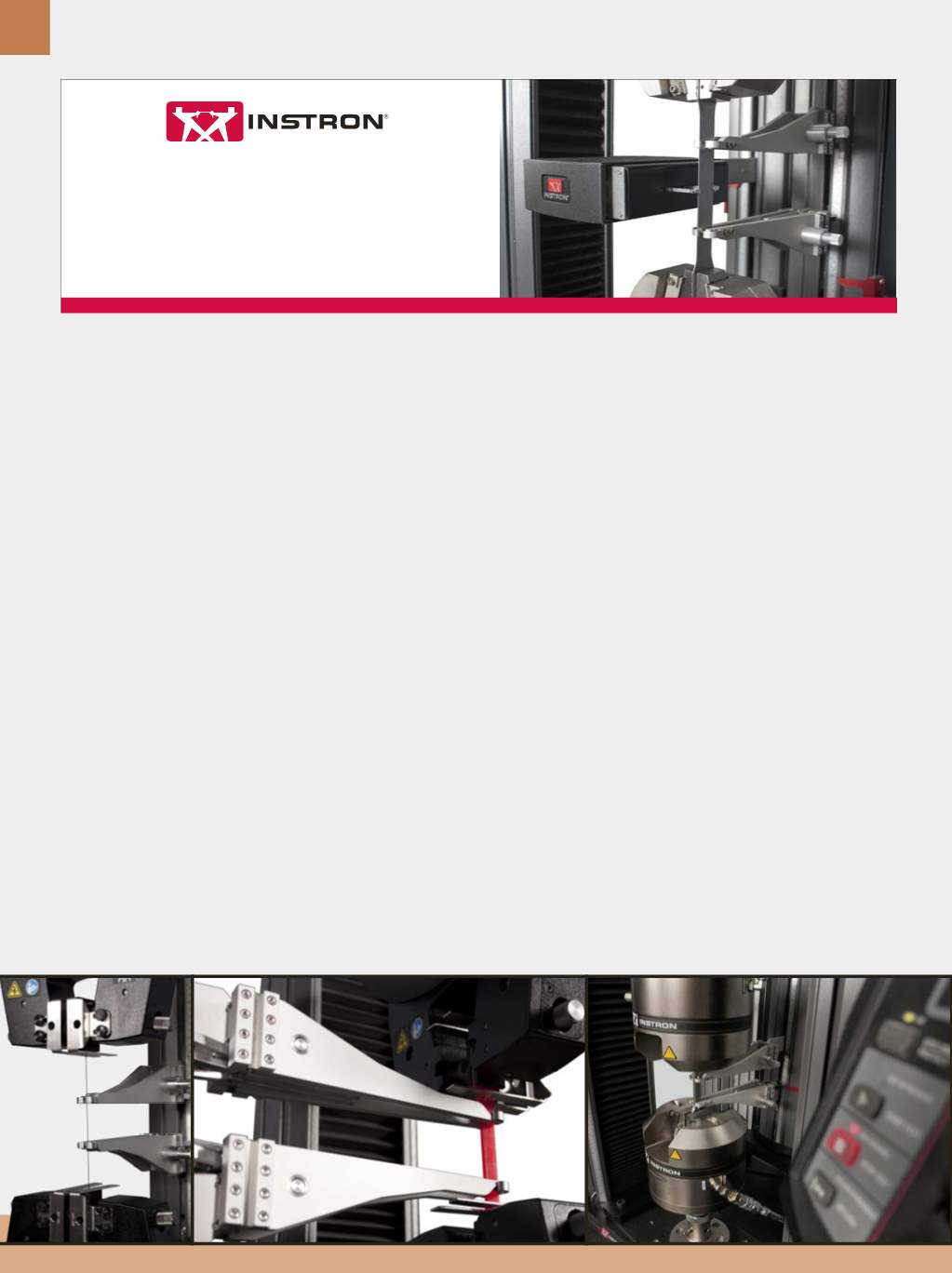

A D V A N C E D M A T E R I A L S & P R O C E S S E S | N O V E M B E R / D E C E M B E R 2 0 1 5
3 8
TENSILE TESTING
William Mankins,
Metallurgical Services Inc.
T
ensile testing is used to quantitatively measure the
strength and ductility of materials, to provide engineering
design data, and to determine the mechanical proper-
ties of materials subjected to axial loading and deformation. It is
also used as a tool for quality assurance of supplied engineering
materials.
Applications include alloy research and development,
determination of the conformance of materials to customer
specifications, failure analysis, and the design of engineered
components of construction, or machine assemblies subject-
ed to load and deformation.
SAMPLES
•
Form
: Solids (metals, polymers, ceramics, composites,
elastomers).
•
Size/shape
: Round or rectangular cross sections with
lengths up to approximately 24 in. (~ 60 cm); actual
components may be tested full size.
•
Preparation
: Specimens are machined in conformance
with requirements of standard test procedures, or actual
parts or components are used (e.g., threaded fasteners)
per standard test procedures.
LIMITATIONS
The range of testing capabilities is limited by the load ca-
pacity of the specific universal testing machine. Testing is de-
structive to material tested.
ESTIMATED ANALYSIS TIME
•
Sample preparation time of up to one hour if extensive
cutting/machining is required.
•
Approximately five minutes per test to measure sample
gage length and cross-sectional area.
•
Up to approximately 10 minutes testing time per test in
the tensile testing machine, which varies depending on
the loading rate.
•
Up to approximately five minutes to perform test
measurements and analyze data after testing.
RELATED TECHNIQUES
Use of the universal testing machine to perform
com-
pression, bending, and shear tests.
Extensive tensile test da-
tabases allow comparisons with other mechanical tests (e.g.,
hardness), other alloys, and materials in other heat treated
conditions.
Strain Testing Solutions for Tensile Applications go.instron.com/aboutstrain

















